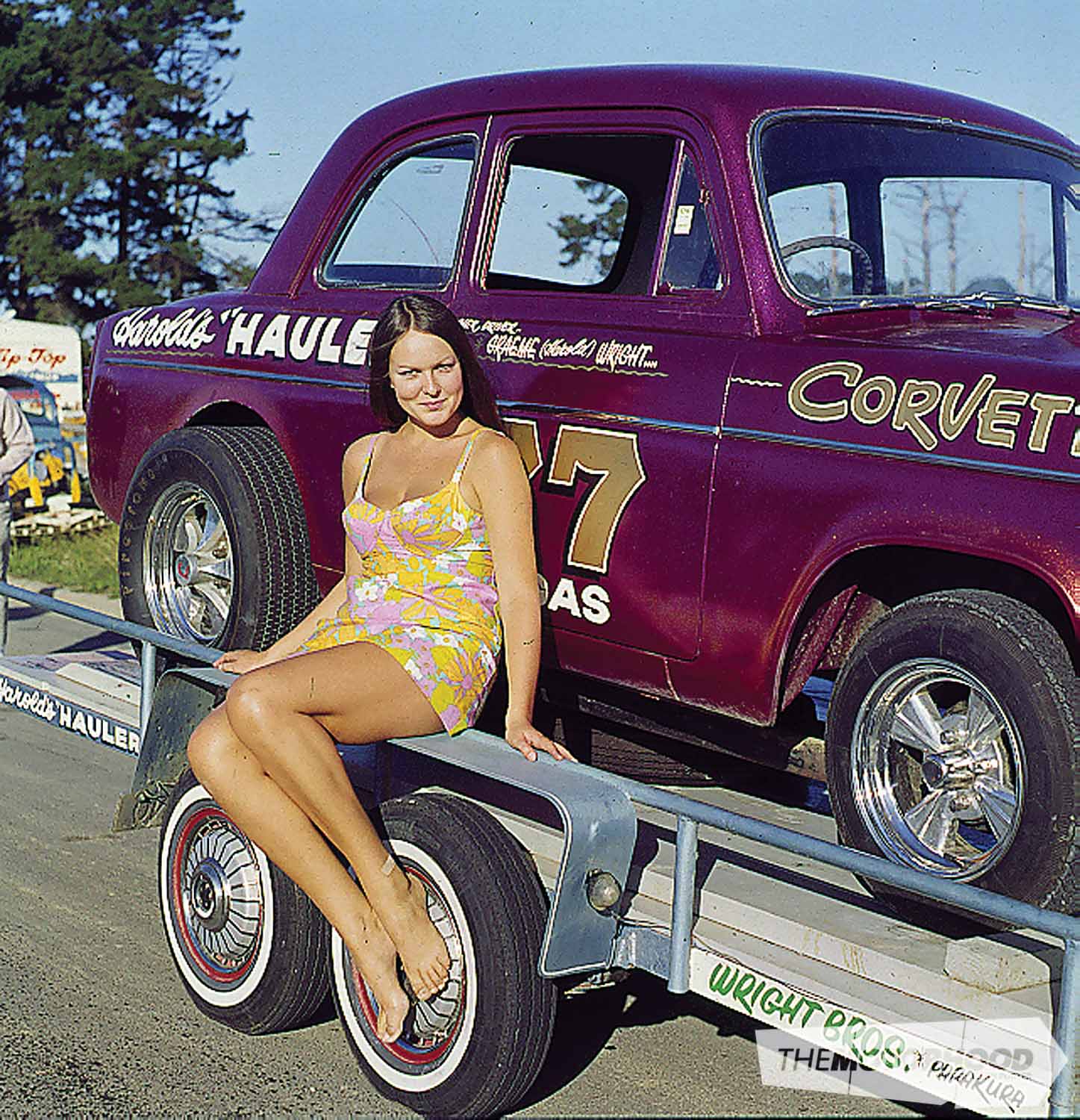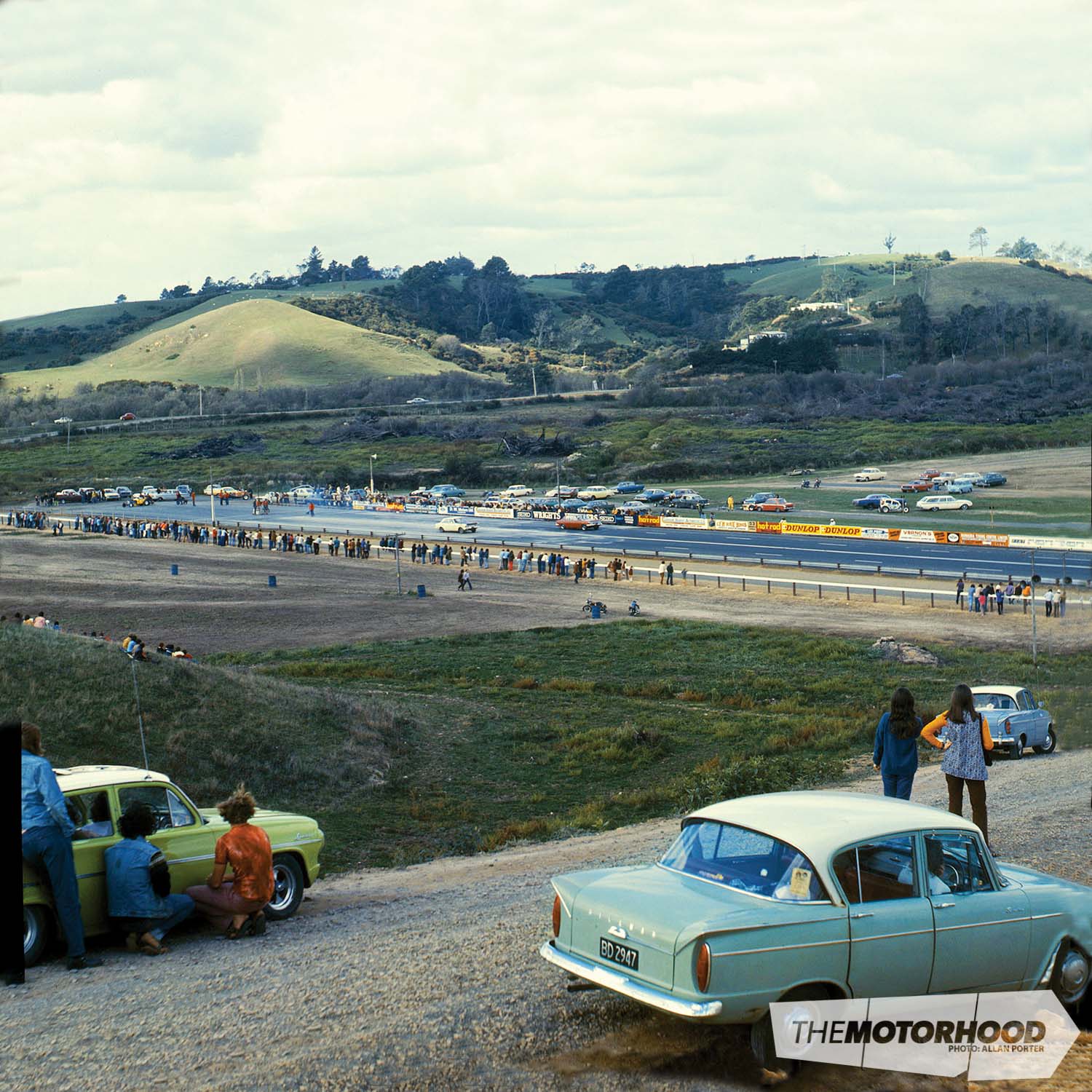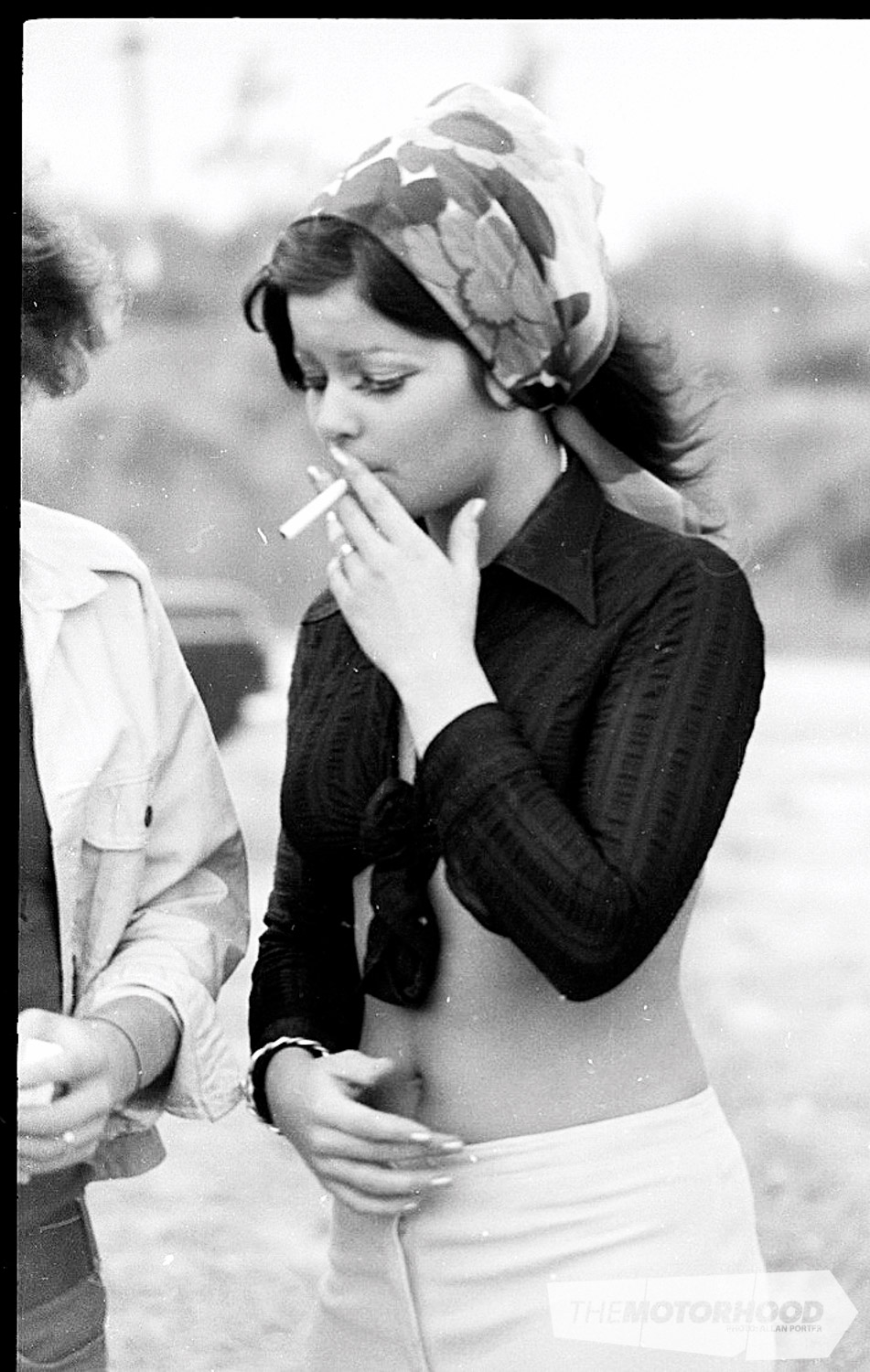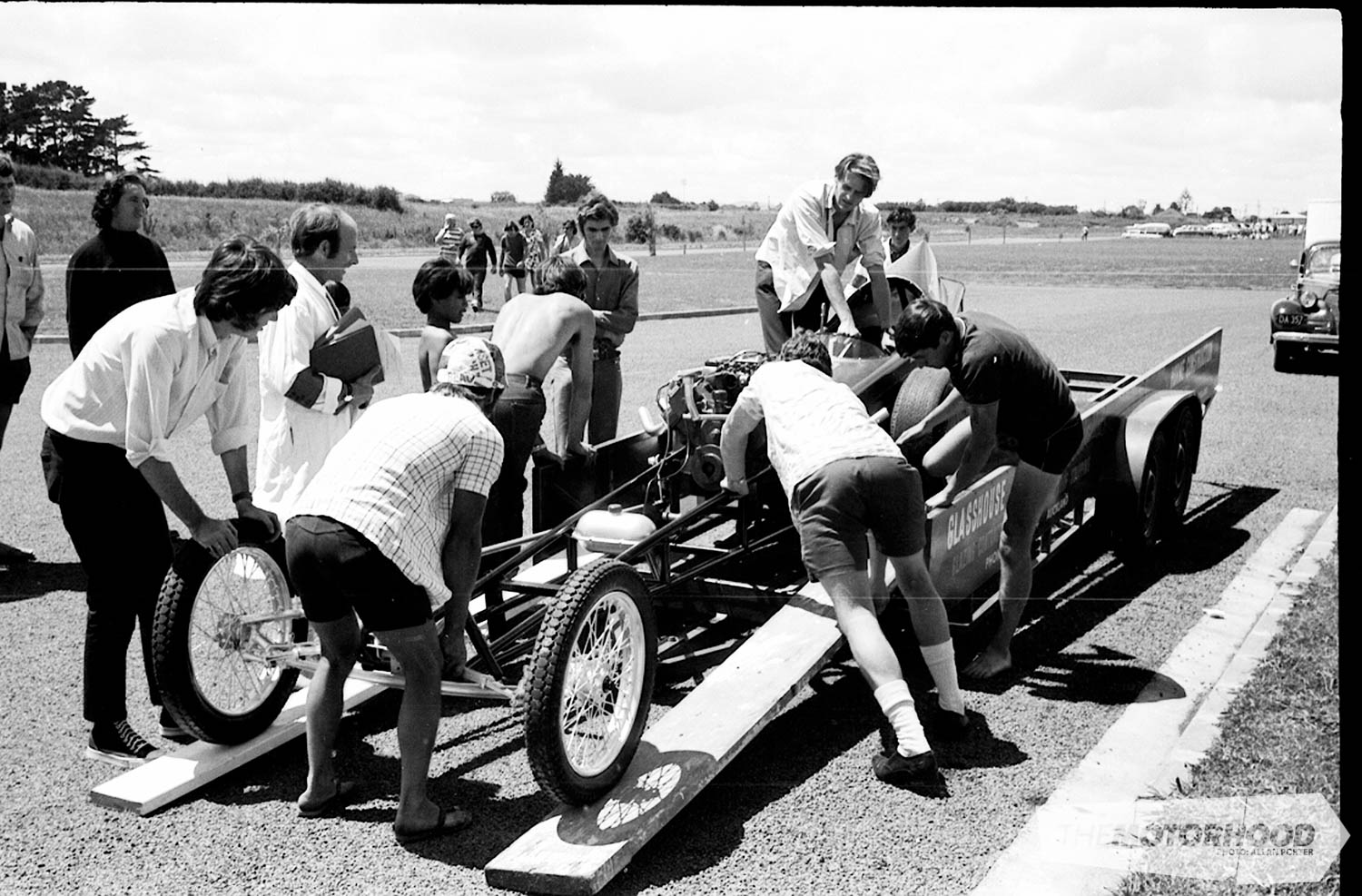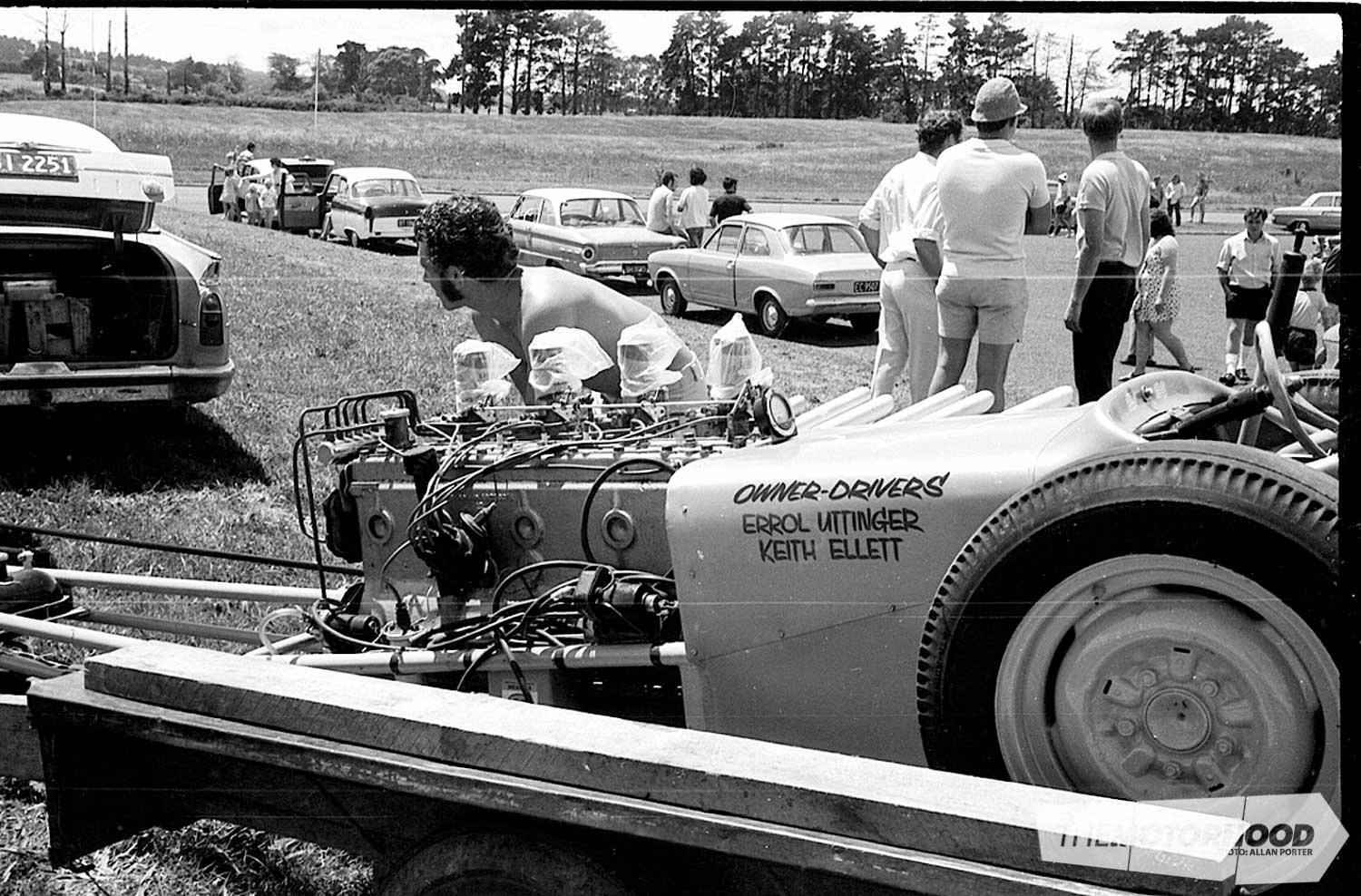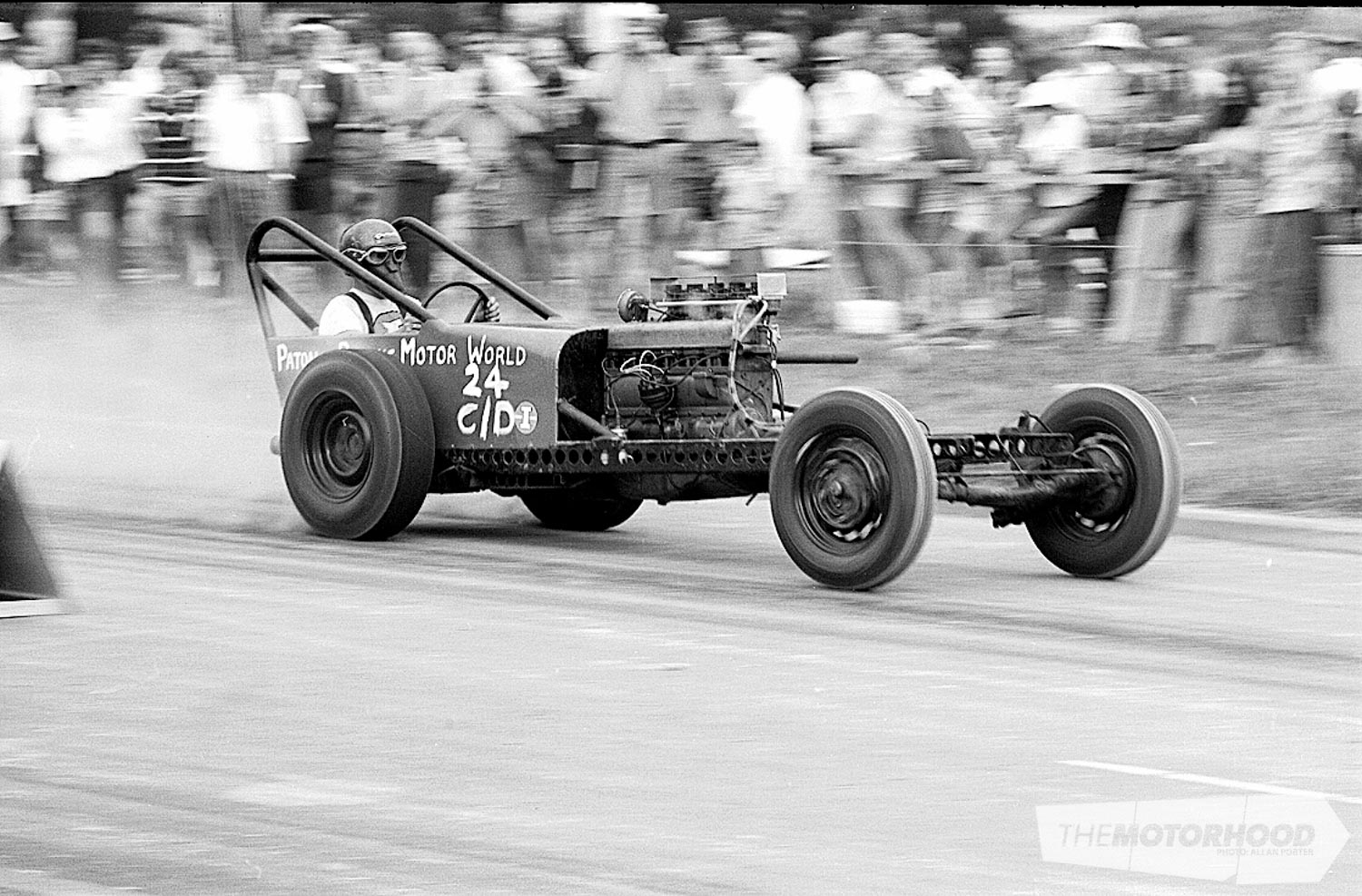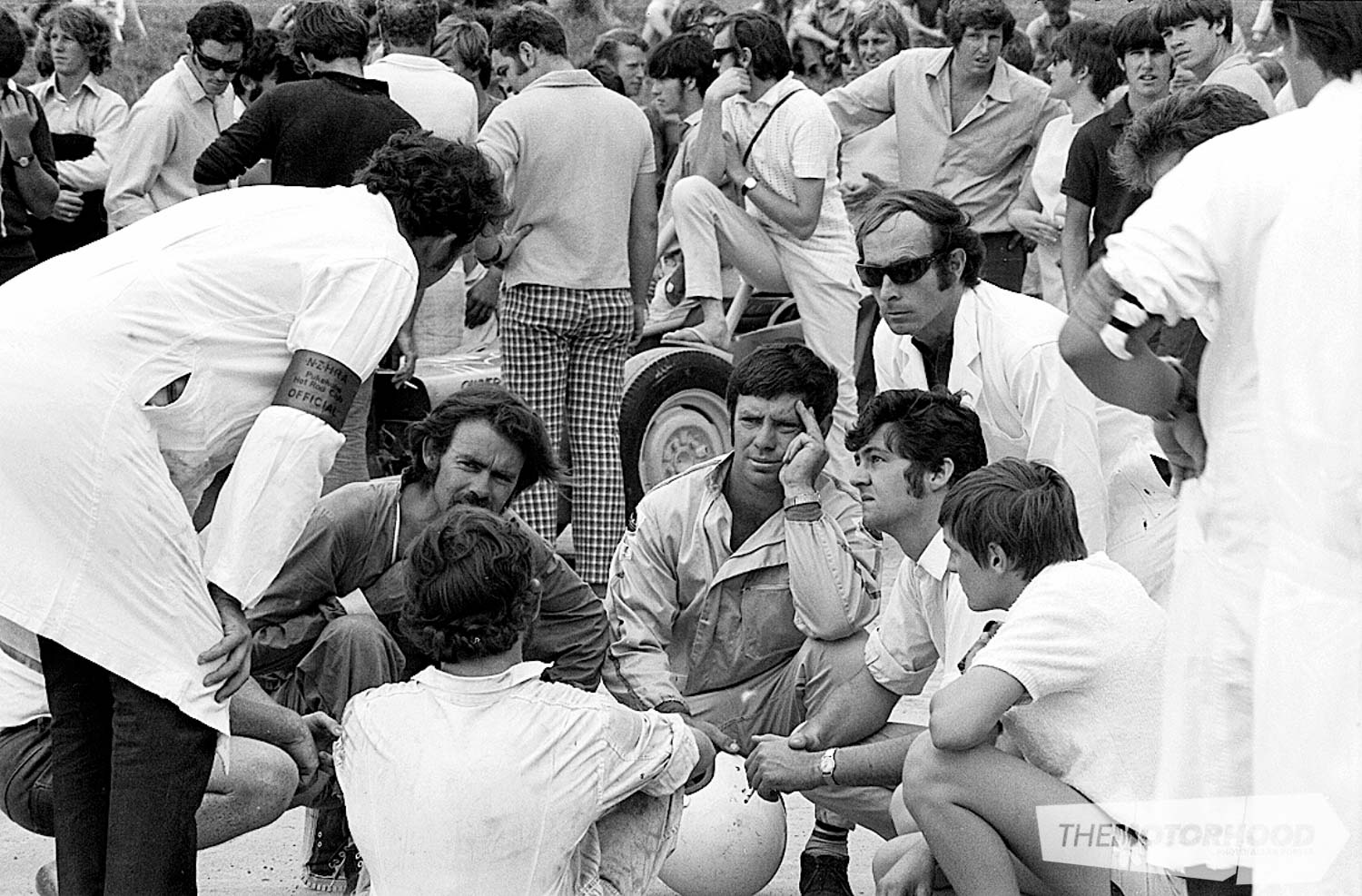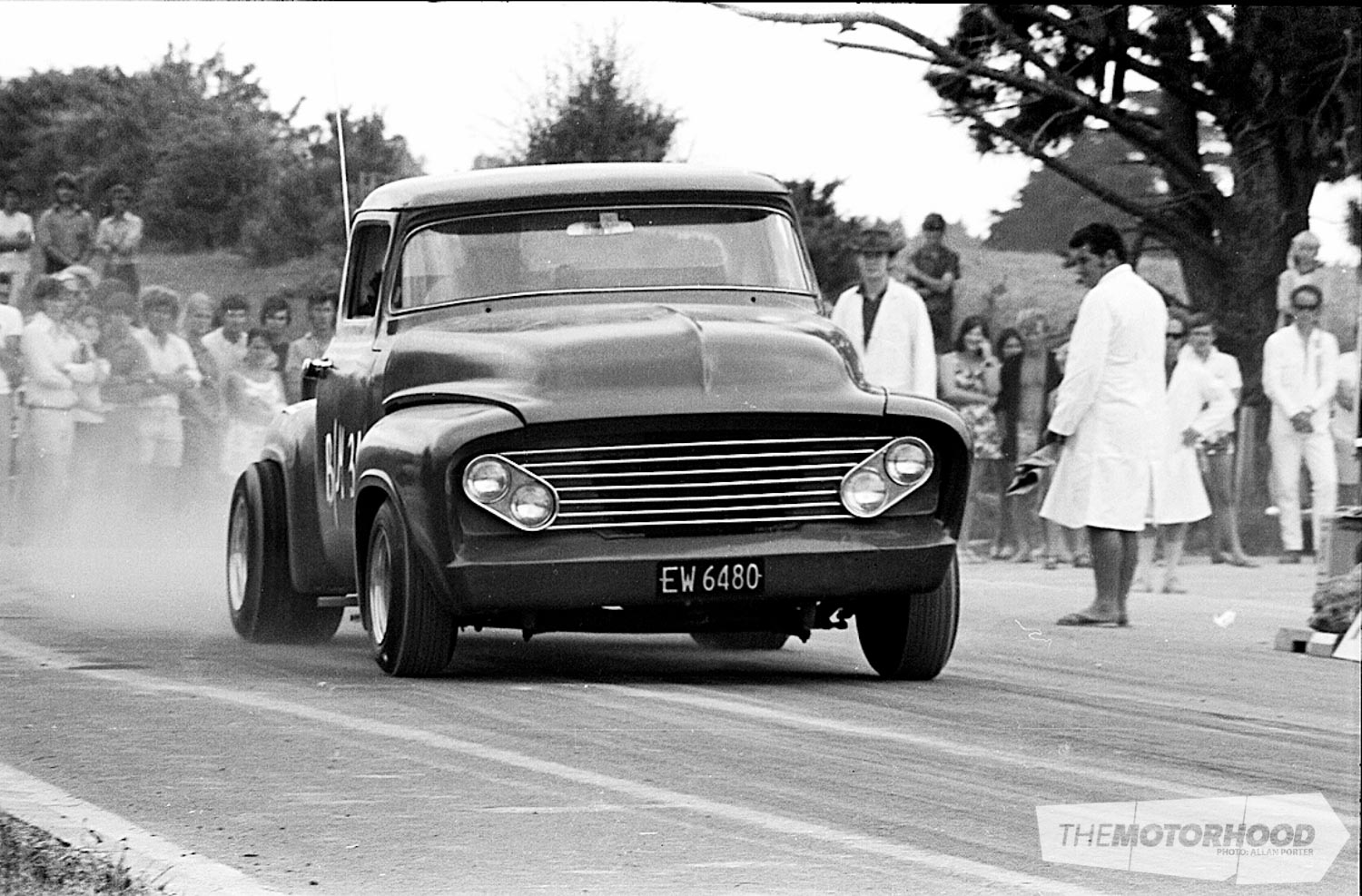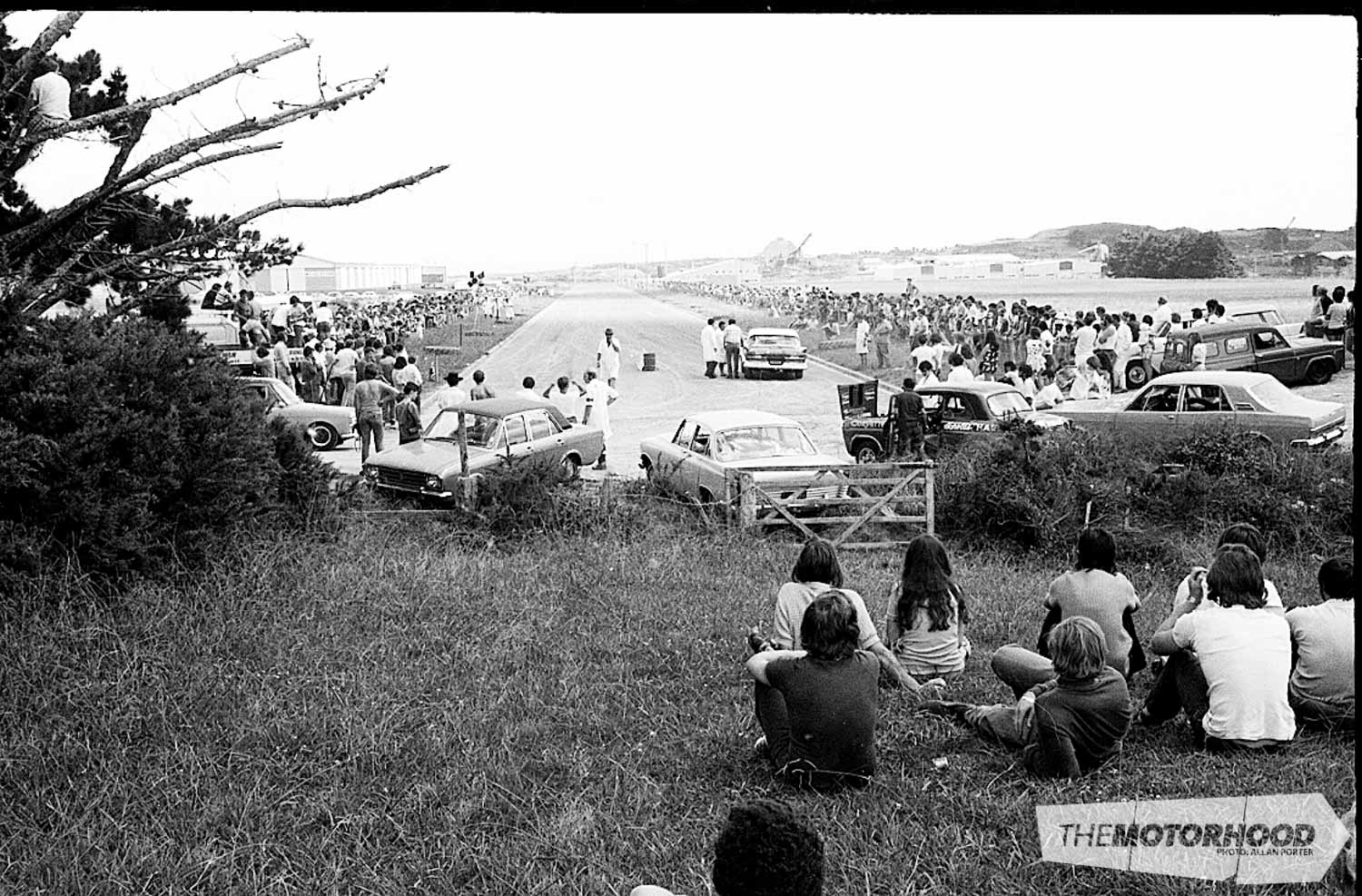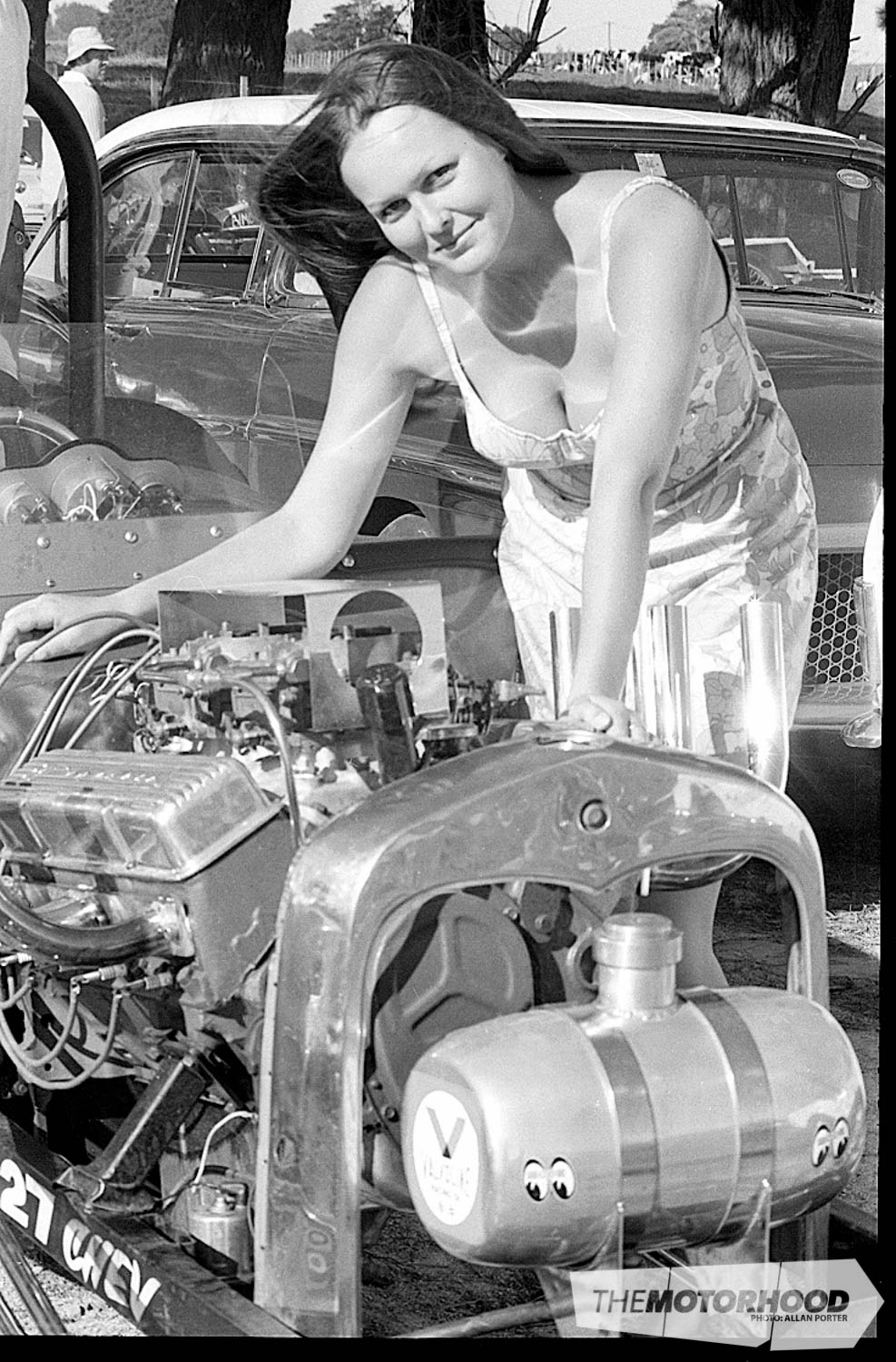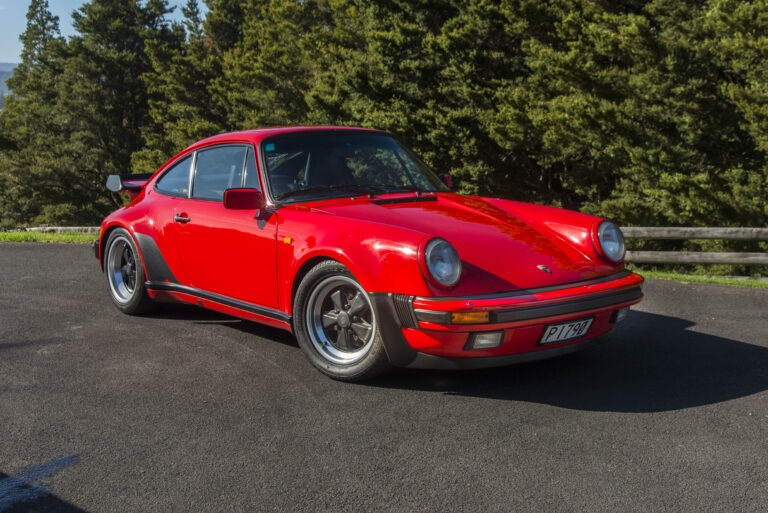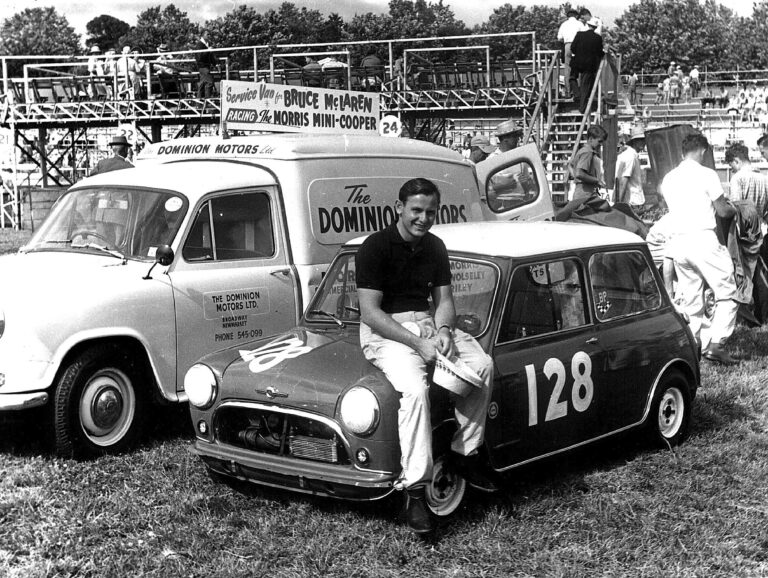data-animation-override>
“Kevin Shaw takes a look at how New Zealand’s oldest dedicated drag strip came to be, and gives thanks to those who made it all happen”
I’ve always been a fan of motorsport, with my earliest motorsport memories being before I was school age, with my dad, watching the old bangers and stock cars being trashed around a figure-eight track somewhere in Hamilton in the ’60s. We moved onto Bay Park in the ’70s; it had the great dirt and circuit tracks that I frequented before I discovered drag racing meets there, too — and it was all downhill from there!
It really is an addiction for which there is no cure, and what better way to honour it than by delving into the archives of our country’s oldest dedicated drag strip. We thought it was about time to dig into the history and learn a bit more about how this venue came about — after all a peat swamp doesn’t seem like the logical place to build a drag strip!

It turns out drag racing has quite a history in New Zealand, with the first sanctioned drag meeting held way back in 1966. The racing was held at the open cast coal mine at Kopuku, south of Auckland and not too far from the future site of what’s currently called Meremere Dragway. With a crowd estimated at a thousand, and with 60 entries, this was a milestone event for drag racing in New Zealand. The surface was a mix of flintstone and coal dust packed down as hard as concrete, nothing like the high-tech compounds for traction we find on modern strips.

With a huge variety of cars — from pre-war coupes through to ‘modern’ Zephyrs, Impalas, Customlines, and even a new SP250 Daimler — there were no proper classes, just a group of enthusiasts out to see who was the fastest down the 1320-foot ‘track’. One of the quickest times was run by Peter Lodge in a 1937 Ford V8 coupe complete with a 6–71 supercharged flathead motor, running a stellar 17.5 seconds before blowing the side out of the engine on his second pass. Another racer of note was Rob Campbell racing his MK2 Zephyr and his flathead V8–powered Willys coupe dirt track car. Reported in Australian Hot Rodding’s May 1966 issue as being nothing like the Aussie tracks, it was also noted that while the overhead valves made several good runs, they proved no match for the flatheads … my, how times have changed.

This inaugural meet at Kopuku provided a steep learning curve for the NZHRA and was a huge success, setting the stage for many more meetings. The first NZ Drag Nationals was held there in 1967 and drag racing was continued at Kopuku through until 1969. The popularity of this new sport with hot rodders was obvious as various temporary tracks were established running one-eighth, three-sixteenth, and quarter-mile sprints at locations such as airfields like Ardmore Aerodrome, Napier Airport, and Waiouru Military Airfield; circuit tracks such as Baypark Raceway, Dunedin Oval; and numerous closed road events. The longest running closed road track is Port Road in Wellington (having been run there for over 45 years without a single rain out!), but the track that had the biggest impact on drag racing in New Zealand was Kerrs Road in Wiri (Manukau).

It was this street in 1970 that set the stage for drag racing to move forward in New Zealand. The NZHRA negotiated with the Manukau Council to run a six meet drag racing series on the brand-new, freshly sealed Kerrs Road. For the first time racers could race on a proper tar sealed track. The NZHRA worked with the Pukekohe Hot Rod Club to organise the six meetings, and they quickly organised the logistics to make these street/competition meetings happen. Hot rodders around the country had been anticipating this day and many had made the move from hotting up their street cars to constructing (based on what was being raced in the US) purpose-built dragsters, altereds and gassers.

After spending considerable time and cash, Kerrs Road was the best location in the country to put their beasts to the test. Many of these men and machines would become legends of the sport with Dave McDougal’s ‘Gnomemobile’, Butch Reid in ‘Dr Zhivago’, Errol Uttinger in ‘Ben Hur’, and Trevor Watson in ‘Devil Woman’, to name just a few. Peter Lodge was the star of the series in his steel-bodied Fiat Topolino Fuel Altered ‘Baloo’, going on to run the first 10-second pass in New Zealand at Napier’s airstrip in April 1973.

With the first meeting held at Kerrs Road on November 27, 1970, the summer of drag racing was successful, with huge crowds and an amazing turnout of racers including circuit racer Jim Richards and a few others trying their skill at the ‘new’ type of racing. Pukekohe Hot Rod Club were out in force for the series, working tirelessly behind the scenes and on race days to make these meeting happens. Many of the volunteers would never own a drag car, working purely for the love of the sport and the spectacle they were creating. There was even coverage on national television, showing the massive crowds, the exciting, noisy racing, and the necessary hair-raising crashes — everything you need for prime time TV!

The series may have been a huge success, but after the six meetings it was evident from the rapidly improving performances of the cars that Kerrs Road was too short. After this one series, we now had a heap of enthusiastic racers and spectators, a field of dedicated drags cars and a large number of street racers all looking for the next place to race.

So where to from here? Well, the aforementioned TV coverage provided the answer when Len Rankin of Meremere called the Pukekohe Hot Rod Club a few days after the Kerrs Road meeting screened on TV. Len had a 227-acre farm at Meremere, which he reckoned could easily house a full half-mile drag strip, and he was happy to lease it out for that purpose. Len explained that while he still ran a few cattle on the farm, he was flat-out working on earth moving contracts so would the Pukekohe Hot Rod Club be interested in looking at the viability of building a track? Phil Hirst and Ralph Wright met Len the following weekend at the farm and were greeted with a massive peat swamp covered with manuka next to a massive hill! Undaunted, they measured it out and there was the required full half-mile with room to spare for the track, plus plenty of space for pits and parking.

Being in the earth-moving business, Len had it all worked out. Clear the trees, drain the swamp, move a large portion of the hill into the swamp to make up the levels, and build the drag strip — there was obviously no Resource Management Act back then! Len was carrying out contracts on the Great South Road at the time between Mercer and Hamilton, and was happy to do the earthworks at the track in the winter. More amazing was, that after providing the land and the machinery, Len was happy to carry the costs associated with the earth moving until the drag strip was operational! The costs associated with building the basic drag strip were huge: the asphalt alone cost over $14,000 and the fundraising budget set by the Pukekohe Hot Rod Club was $50,000 — a big ask today, let alone in 1970.
The Club was enthusiastic about the possibility of a drag strip, as was the NZHRA, and after a few meetings it was decided to offer 1000 $50 debentures to raise the funds, with the buyers to receive free admission to the drags. Visits were made to all of the clubs from Orewa to Whakatane and most dug deep, with Sulphur City taking 20, and the Hamilton Hot Rod Club an amazing 60 of the $50 debentures.

But finding funds was only part of the problem. The major issue was the Waikato District Council and the change of use of the land, from farming to a noisy drag racing venue, and the influx of crowds to the area. What a massive task that was in 1971; something that would be near impossible in that location today. Again, the Pukekohe team got stuck in and held public meetings at Meremere, Mercer and Pokeno, and personally visited all of the land owners in a five-mile radius explaining the intentions of the Club in building the track. Kevin Delores made a scale model of the drag strip and prepared movies of American drag racing, which were used at the public meetings and at local schools to gain support for the project. These were also used at meetings with the Council to show what a drawcard the track would be and the benefits it would bring to the area. Finally, in October 1971, the specified departure was approved.
Now that the legal hurdles had been overcome all they needed was the money, so the Pukekohe Hot Rod Club threw themselves into massive fundraising mode. Debentures had been selling well, but more ideas were needed. A raffle of a fibreglass boat, trailer and outboard, complete with fishing gear, was a good earner. Another was a trip to the Coromandel for a couple of sacks of crayfish, which were cooked and raffled at Tuakau, Pukekohe and Waiuku pubs. They even ventured into house demolition, but after some overenthusiastic Club members started to demolish the wrong house, they decided to scrap this activity as a fundraiser … A good source of funds, and experience for the track when it opened, was the Pukekohe Grand Prix and the Benson and Hedges 500. These meetings provided invaluable insights into crowd control, public car parking and the associated problems with running major motorsport events.

Back at Meremere, the magnitude of the task being undertaken was becoming apparent. Despite clearing acres of manuka, and the creation of a series of piped cross-drains to drain the site, the process of moving the mountain of dirt to level the site was slow. It was becoming increasingly evident that the antiquated earth scoop and Len’s little bulldozer were just not up to the task at hand, and that it would take many years to get the track levelled out. Len again came to the rescue, when he won a major roading contract that required some serious earth moving equipment. Mortgaging himself to the hilt, he purchased the latest Wabco earth scraper, and while the contract took priority, he bought the entire fleet of heavy equipment home each weekend.

Len and his sons would work all weekend, virtually around the clock, doing in two days what would have taken a month with the old gear. With a levelled and compacted clay base, another local, Laurie Hyland, offered the use of his trucking fleet, again with delayed payment until the track started making money. Huge amounts of coal ash from the Meremere Power Station were trucked in and compacted in layers over the clay, which when watered and compacted set like concrete. Roose Shipping Company supplied and spread the metal over the compacted coal ash base, and also allowed the Club to spread the payment for this work over the next three years, interest free. Without help like this from local businesses and the Rankin family, the strip may never have existed. Mention must also be made of Pukekohe Hot Rod Club member Glynn Parker who offered an interest free loan of $3500 to purchase the latest Time-O-Matic timing gear for the new track.
Late in 1972, meetings were held with Champion Spark Plugs, and an initial five-year sponsorship deal was struck. Their commitment encouraged others such as Fisher and Paykel, Coca Cola, Atlantic Oils, and BNZ to come on board, too. Around this time the engineers from both Roose and Bitumix had taken over the compaction duties, and the track was level and ready for the all-important blacktop to be applied. March ’73 saw the hot mix machines arriving on-site with half the volunteers taking the day off work to see history being made. New Zealand’s first dedicated drag strip was almost a reality!

With the cost of the hot mix the budget had blown out to $60,000, but they were past the point of no return. The official opening had been set for Easter Monday, which was only a few weeks away, so the Pukekohe Hot Rod Club crew soldiered on. Working bees were held every weekend installing the Armco, advertising fences, building toilet blocks and catering blocks. The team toiled tirelessly, and at the end of each weekend they began prepping the track with a bit of grudge racing to start the layering of rubber at the start line. The proper track markings were painted, along with the start and finish lines, and the Atlantic Oil win/lose lights were among the major jobs completed in the final days before the grand opening.
Promotion would be the key to the new venue’s success, and the Pukekohe Hot Rod Club made sure it was promoted to the max, organising a media and sponsor’s day at the drag strip. Invitations were also sent to all major radio stations and newspapers in the area, which received excellent responses. Those who showed up were treated to a full briefing about what drag racing was and shown through several of the competition cars on display, before being treated to demonstration passes.

This was uncharted territory in New Zealand with purpose-built drag cars being raced on a brand-new, purpose-built track: real history in the making. The response was phenomenal with photos and glowing editorials in newspapers all over the North Island — mission accomplished for the promotion of the opening of Champion Dragway in Meremere. Now all they needed was for the people to come!
Keep an eye out for part two (coming May 24, 9am) — the opening meeting that never was!
Our thanks to Ralph Wright for all of his assistance with writing this article, and Allan Porter for the photos.

